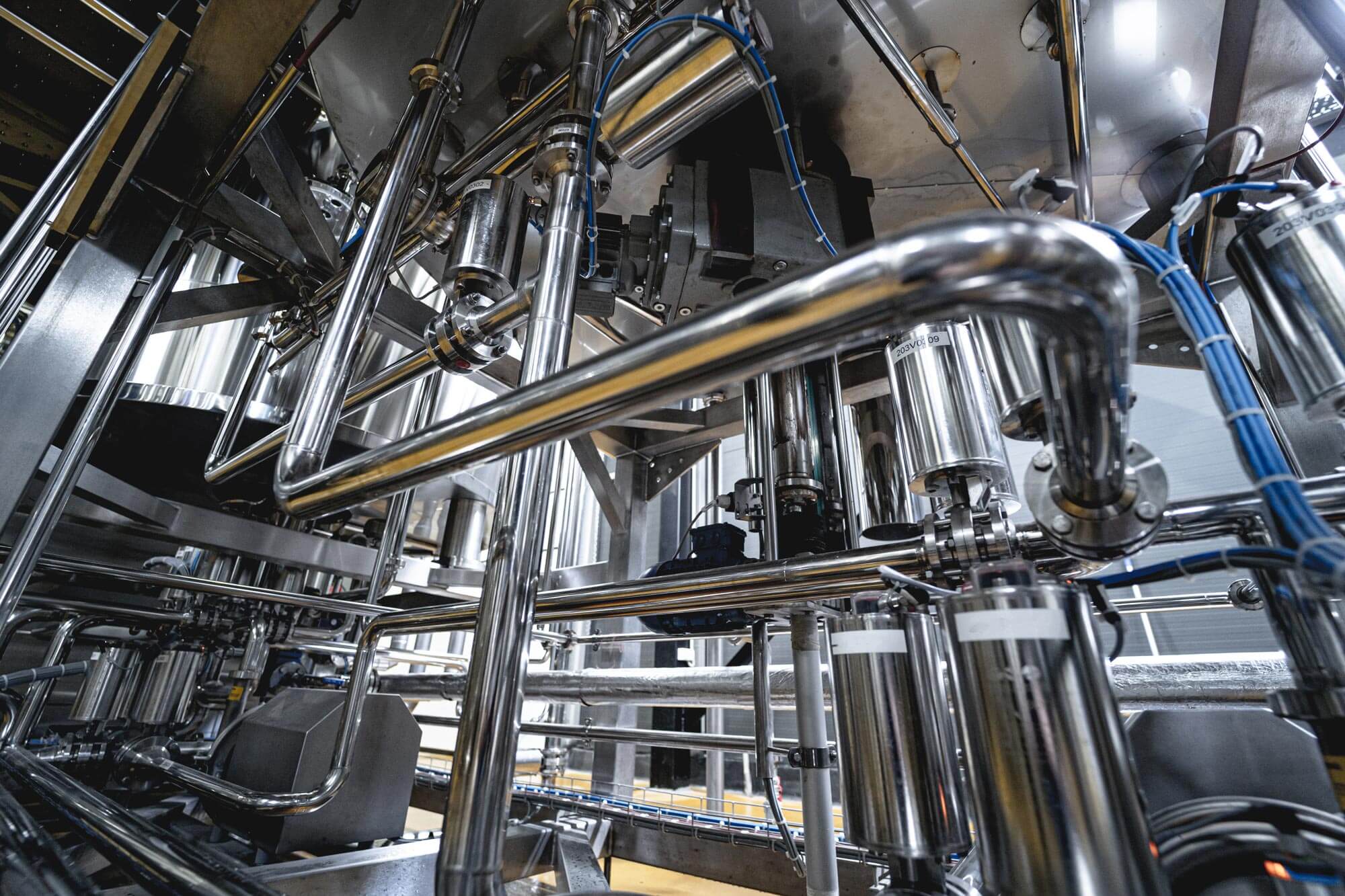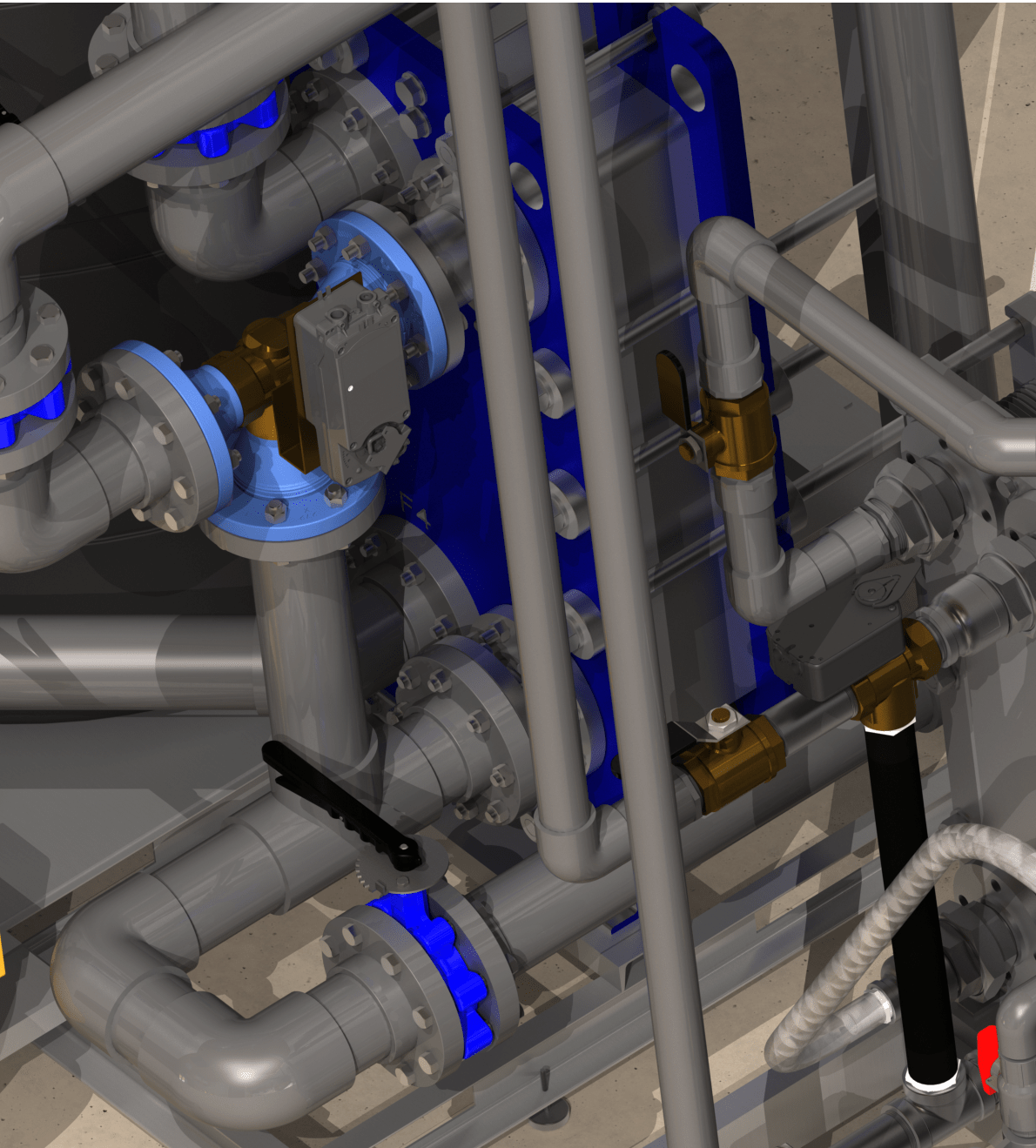Top Trends Shaping the Future of DVS Heat Transfer Systems
Wiki Article
Innovations in Heat Transfer Systems: What You Need to Know for Ideal Efficiency
Technologies in Heat transfer systems are transforming performance throughout different sectors. Advanced materials like graphene and nanofluids assure substantial enhancements in thermal conductivity. The assimilation of IoT and equipment understanding supplies chances for real-time surveillance and enhanced power efficiency. Nonetheless, the landscape of thermal administration is swiftly advancing (DVS Heat Transfer Systems). Understanding these advancements is vital for accomplishing suitable system efficiency and sustainability in the future. What particular advancements are forming this change?Arising Products for Enhanced Heat Transfer

Advanced Heat Exchanger Styles
While traditional Heat exchangers have actually served their objective in different applications, progressed designs are currently emerging to meet the raising needs for effectiveness and efficiency. These ingenious styles, such as plate, shell-and-tube, and finned-tube Heat exchangers, incorporate boosted surface and boosted flow patterns to enhance thermal transfer rates. On top of that, portable layouts enable for decreased space demands without compromising performance. Advanced products, such as compounds and corrosion-resistant alloys, additionally improve longevity and efficiency under severe conditions. Moreover, simulation innovations and computational liquid characteristics are significantly employed to improve these layouts, guaranteeing peak Heat transfer features. As sectors look for to decrease energy usage and maximize result, the fostering of innovative Heat exchanger designs is critical in attaining these objectives.The Function of Nanotechnology in Heat Transfer
Nanotechnology plays a crucial function in boosting thermal conductivity within Heat transfer systems. By adjusting products at the nanoscale, researchers have actually accomplished substantial enhancements in energy effectiveness. These innovations not only enhance performance but likewise add to even more sustainable energy solutions.Boosted Thermal Conductivity
Significant developments in thermal conductivity have emerged through the application of nanotechnology, changing Heat transfer systems across different markets. By integrating nanoparticles right into Heat transfer liquids and products, scientists have actually accomplished impressive rises in thermal conductivity. These nanoparticles, such as carbon nanotubes, graphene, and metal oxides, boost the Heat transfer residential or commercial properties as a result of their high area and one-of-a-kind thermal attributes. The resulting composites show enhanced performance in applications varying from electronic devices cooling systems to renewable resource technologies. The capability to customize the dimension, shape, and make-up of nanoparticles allows for maximized thermal management remedies. Therefore, nanotechnology continues to play a critical duty in the development of much more reliable and efficient Heat transfer systems, leading the way for boosted industrial applications.
Energy Efficiency Improvements

Integration of IoT in Heat Transfer Solutions
The assimilation of IoT in Heat transfer systems presents the execution Continue of wise sensors that improve functional effectiveness. These sensors make it possible for real-time information monitoring, enabling prompt changes and optimizations. This technical development has the potential to significantly enhance efficiency and energy management in Heat transfer applications.Smart Sensors Application
As Heat transfer systems evolve, the combination of wise sensors through the Net of Things (IoT) has arised as a transformative method. These sensors allow real-time surveillance of flow, pressure, and temperature prices, improving system effectiveness and integrity. By gathering and transferring information, they promote aggressive maintenance, lowering the risk of system failures. Furthermore, wise sensing units add to energy cost savings by refining operational parameters based on ecological conditions. Their ability to examine anomalies and fads permits notified decision-making, ensuring peak performance of Heat transfer systems. As markets significantly embrace this technology, the implementation of clever sensing units stands to reinvent just how Heat transfer systems are taken care of, paving the way for higher sustainability and boosted efficiency outcomes.Real-Time Data Tracking
Just how can real-time data monitoring boost the efficiency of Heat transfer systems? By incorporating Web of Things (IoT) modern technology, Heat transfer systems can leverage continual data collection from smart sensors. This real-time monitoring permits instant analysis of pressure, flow, and temperature level prices, enabling operators to determine ineffectiveness immediately. Consequently, changes can be made to maximize efficiency, minimize energy intake, and expand equipment life expectancy. In addition, predictive maintenance can be implemented, lessening unanticipated downtime and costly fixings. The capacity to envision efficiency metrics through dashboards boosts decision-making, promoting a positive technique to system administration. Eventually, real-time information keeping track of not just enhances functional performance however likewise adds to sustainability goals within commercial procedures.Energy Performance and Sustainability Trends
Power effectiveness and sustainability patterns are improving the landscape of Heat transfer systems, driving innovation and compliance throughout numerous industries. Organizations are increasingly focusing on energy-efficient layouts to minimize operational costs and minimize ecological impacts. The combination of renewable resource sources is ending up being more widespread, allowing Heat transfer systems to run sustainably while fulfilling regulative demands. Furthermore, developments in modern technologies and materials advertise lower energy intake and enhance total performance. Lifecycle evaluations are additionally getting grip, allowing firms to review the ecological impact of Heat transfer systems from production to disposal. This focus on sustainability not only supports business responsibility however also positions organizations competitively in a market where consumers significantly favor green services. Power efficiency and sustainability stay crucial considerations for future growths in Heat transfer technology.Technologies in Thermal Monitoring Solutions
While the need for efficient Heat transfer continues to increase, innovations in thermal monitoring remedies are emerging to attend to both efficiency and sustainability obstacles. Advanced materials, such as stage change products and nanofluids, are being created to enhance Heat transfer efficiency - DVS Heat Transfer Systems. These materials boost thermal conductivity and enable better temperature guideline in numerous applications. In addition, innovations like energetic thermal control systems are acquiring traction, enabling real-time changes to take care more info here of Heat circulation successfully. These systems contribute to power savings and minimize the environmental influence of thermal procedures. The assimilation of IoT in thermal administration helps with monitoring and predictive upkeep, guaranteeing optimized performance and longevity of Heat transfer systems. Overall, these innovations represent substantial strides toward even more lasting thermal monitoring techniquesFuture Directions in Heat Transfer Modern Technology
Emerging improvements in thermal management solutions signify a promising future for Heat transfer innovation. Researchers are increasingly concentrating on developing materials with premium thermal conductivity and boosted power effectiveness. Innovations such as nanofluids, which contain put on hold nanoparticles, provide significant renovations in Heat transfer efficiency. In addition, the integration of smart products that adjust to varying temperature conditions is obtaining grip, permitting even more efficient and receptive systems. The surge of additive manufacturing methods is additionally enabling the style of complex Heat exchanger geometries that maximize liquid flow. In addition, the implementation of artificial intelligence formulas is expected to change the optimization of Heat transfer systems, facilitating anticipating maintenance and performance enhancement. Collectively, these developments are positioned to transform the landscape of Heat transfer modern technologies in different sectors.
Frequently Asked Questions

Exactly how Do I Select the Right Heat Transfer System for My Application?
Choosing the ideal Heat transfer system involves reviewing application requirements, consisting of temperature level arrays, fluid residential properties, and performance requirements. Evaluating system types, maintenance considerations, and cost-effectiveness additionally plays an important function in making an educated decision.What Are the Upkeep Demands for Advanced Heat Exchangers?
Maintenance requirements for innovative Heat exchangers usually consist of routine assessments, monitoring for leakages, cleansing of surfaces, and ensuring optimal flow rates. Adhering to manufacturer standards warranties reliable operation and prolongs the devices's lifespan.
How Do Ecological Factors Influence Heat Transfer Efficiency?
Ecological aspects significantly influence Heat transfer effectiveness. Variations in temperature level, air flow, and humidity effect thermal conductivity and convective Heat transfer, eventually affecting system performance and necessitating factor to consider during the design and operation of Heat transfer systems.What Security Standards Relate To Heat Transfer Equipments?
Safety criteria for Heat transfer systems commonly include guidelines from companies such as ASME and ASTM. DVS Heat Transfer Systems. These standards address materials, style, and operational practices to assure reliability, effectiveness, and defense against risks in different applications
How Can I Repair Usual Heat Transfer System Issues?
Repairing usual Heat transfer system issues involves checking for leaks, guaranteeing appropriate liquid flow, examining insulation stability, and validating temperature differentials. Identifying these variables can help maintain system performance and stop more problems.Nanotechnology plays an essential function in enhancing thermal conductivity within Heat transfer systems. Significant improvements in thermal conductivity have actually emerged via the application of nanotechnology, reinventing Heat transfer web systems throughout numerous industries. Developments in thermal conductivity via nanotechnology have actually led the means for impressive renovations in power efficiency within Heat transfer systems. Power performance and sustainability trends are improving the landscape of Heat transfer systems, driving development and conformity across different markets. The combination of IoT in thermal administration facilitates monitoring and anticipating upkeep, making certain maximized efficiency and long life of Heat transfer systems.
Report this wiki page